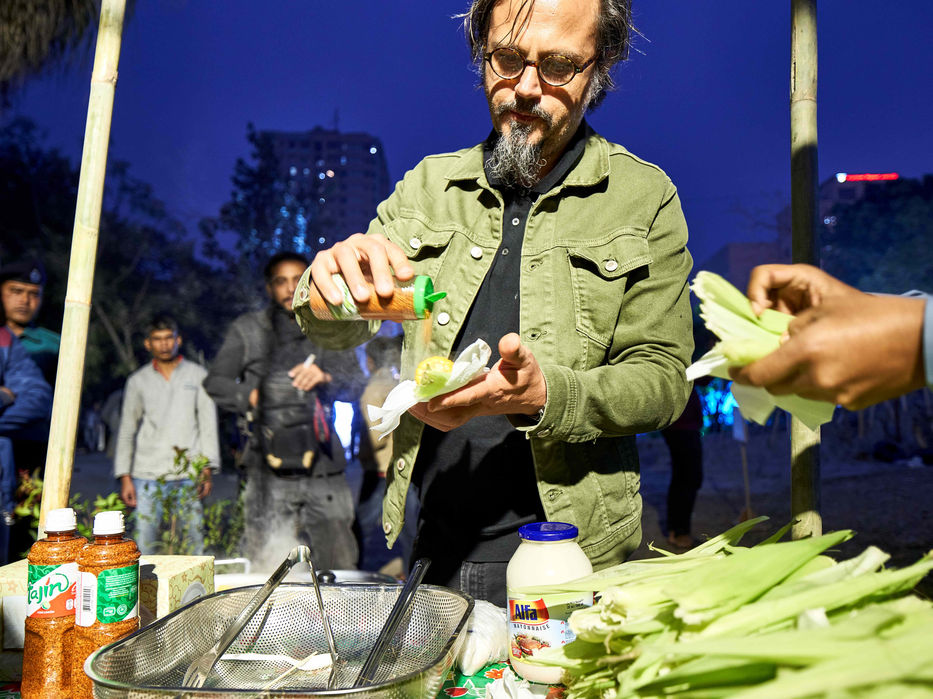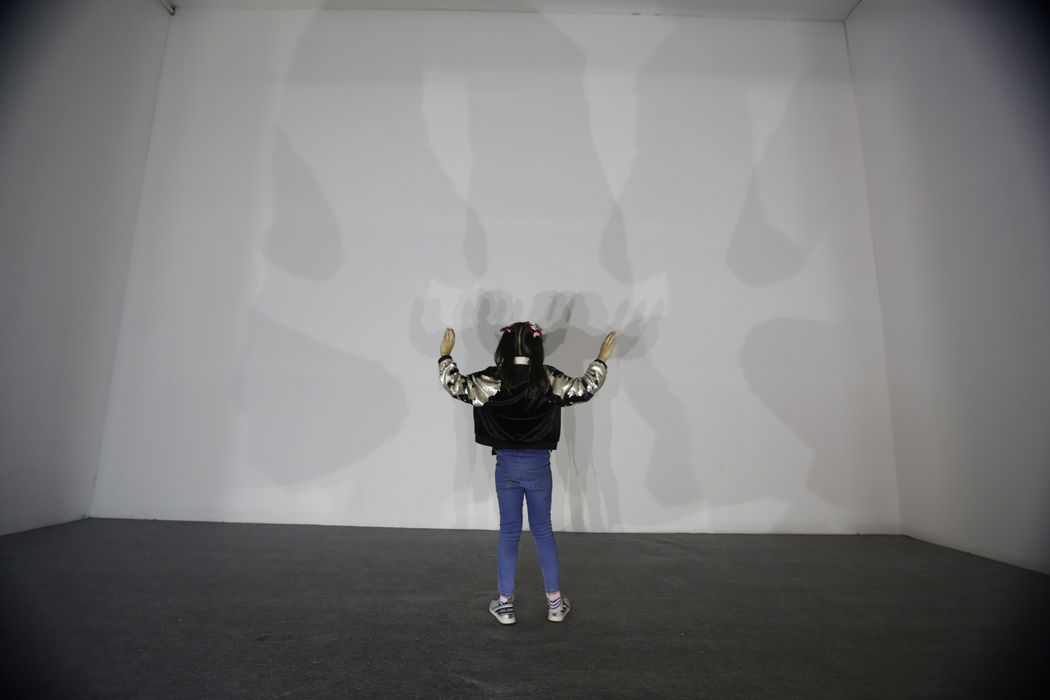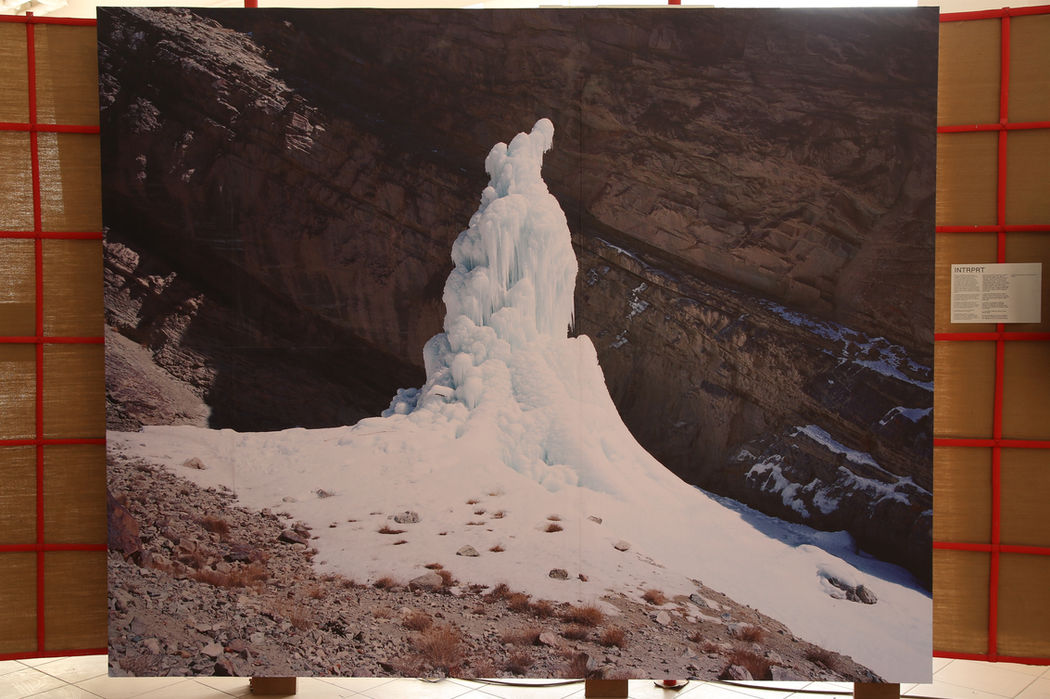We have been witnessing movements of people of all ages from Chile, to Lebanon, India, Hong Kong and beyond, all voicing a desire for forms of agency in the context of persistent repressive colonial and authoritarian structures. DAS was formed through the collective building of a grassroots transnational civil space where culture can be shared beyond the limits of the nation state. Together with artists who create situations, build relations, and organise events and institutions, we aim to create a strong sense of community rooted in Dhaka. The word body can also be read as individuals who come together as a group. Like antibodies, individuals within any body need to maintain the ability to disagree with the group and contribute to the dynamic evolution of the fragments, situations, and personalities that make it up. A powerful aspect of groups is that they are dynamic and fluid; they can come together, break up into two or more groups, move when they need to, and dissolve when their work is done, reforming if/when they are needed again.
Damián Ortega
b. 1967, Mexico City; lives and works in Mexico City
Sisters; Hermanas, 2019–2020
Bricks, Corn, Squash, Chiles, Beans
Commissioned and Produced by Samdani Art Foundation for DAS 2020.
Courtesy of the artist, kurimanzutto, White Cube, and Samdani Art Foundation.
Realised with additional support from kurimanzutto and White Cube.
A portion of the corn was grown and donated by Shakhawat Hossain
In an empty, uninhabited lot covered by wild weeds and grass, a big conical figure is raised. It is made of red bricks and could be described either as a stupa, or a pre-Colombian pyramid. It is a sculptural silo, containing an offering with a sample of one of the native corn species of Mexico, a single seed.
Seeds can be deposited on any land, and with some luck and under the right conditions, they multiply in a micro-explosion of fertility. Limits of private property are tested when rituals, knowledge and products are taken from one place to another. A ‘milpa’ is a piece of land that grows from using ancient Mesoamerican agricultural practices that are necessary to produce products to meet the basic needs of a family. A milpa contains a diverse ecosystem that produces corn, beans, squash and chile working in solidarity. This ecosystem is, to a certain point, what has fed us, and one of the most valuable gifts that Damian Ortega wishes to share from Mexico.
Ortega uses sculpture, installation, performance, film, and photography to arrive at events of deconstruction, both material and conceptual. In his work, the familiar is altered and re-purposed, leading the viewer to inspect the unexpected interdependence of the components involved. Ortega highlights the complex social, political, and economic contexts that are embodied in every-day objects.
Fernando Palma Rodríguez
b. 1957, San Pedro Atocpan; lives and works in San Pedro Atocpan
‘Language programmes us’, shares Fernando Palma, indicating that it is possible to be a different person in different languages. Palma is an expert in programming; he has a background as an electrical engineer and he is interested in the transmission of systems, knowledge, and electricity. Part of Palma’s work is preserving the Nahua language, a group of languages related to the Aztec people, settled mainly in the central part of Mexico. ‘It is through indigenous languages that we begin to see a different relationship between people and their environment, their art and culture’, writes Palma. For example, the word for artist in Nahua language is derived from the word for the number five – because the artist is the fifth point connecting the four points on a compass: North, South, East, West. This definition does not contain the triangular axes of fame, power or money. The artist had a formative experience in Bangladesh visiting the Chakma community during a residency at Britto Art Trust in 2003, understanding that the condition of his community in Mexico was linked to that of indigenous people on the other side of the world. He returns to Bangladesh to catalyse transmission of indigenous knowledges of language and ecology through workshops related to his body of work creating Nahua inspired pictograms (found in The Collective Body).
Palma makes robotic sculptures that perform narrative choreographies, addressing issues faced by Mexican indigenous communities, such as that in the agricultural region of Milpa Alta in Mexico. These include human and land rights, violence, and urgent environmental crises. He runs Calpulli Tecalco, a non-profit organisation dedicated to the preservation of Nahua language and culture as well as Libroclub Fernando Benitez In Cualli Ohtli, a book club active for over twenty years with Nahua reading groups for children, and Maspor Nosotros AC, an organisation constituted in order to prevent, mitigate and compensate for the environmental and social impact caused by industrial and consumer waste.
Olafur Eliasson
b. 1967, Copenhagen; lives and works in Berlin
Your Uncertain Shadow (Black and White), 2010
HMI lamps, glass, aluminium, transformers
Courtesy of the artist and Samdani Art Foundation
Several spotlights project light on a white wall, however these lights only become perceptible when visitors enter and move across the space, blocking the light source and filling the void of the room with the presence of their shadows. The moving shadows of visitors create a sort of choreography and stretch and contract in tones ranging from grey to black, varying based on the movements of bodies in the space. Differences in race, religion, age, and class are flattened in this work as details used to identify individuals are reduced to moving outlines, and we become more aware of the present moment and the patterns we can build by engaging with people around us.
Olafur Eliasson’s art is driven by his interests in perception, movement, embodied experience, and feelings of self. He strives to make the concerns of art relevant to society at large. Art, for him, is a crucial means for turning thinking into doing in the world. Eliasson’s works span sculpture, painting, photography, film, and installation. Not limited to the confines of the museum and gallery, his practice engages the broader public sphere through architectural projects, interventions in civic space, arts education, policy-making, and issues of sustainability and climate change.
Taloi Havini
b. 1981, Arawa; Lives and works in Sydney.
Reclamation, 2019–2020
Installation, mixed media
Co-Curated by Diana Campbell, Alexie Glass-Kantor, and Michelle Newton. Commissioned and Produced by Samdani Art Foundation and Artspace, Sydney for DAS 2020 with support from the Australian Government through the Australia Council for the Arts, its arts funding and advisory body. Realised with additional support from the Australian High Commission of Bangladesh Reclamation is a new work by Taloi Havini created in collaboration with her Hakö clan members. The artist draws from recent historical movements of conflict as well as acts of resilience and self-determination experienced within the social fabric of her inherited matrilineal birthplace, the Autonomous Region of Bougainville. Reclamation is a site-specific assemblage of natural materials, harvested from the artist’s own matrilineal Hakö clan land. Here, Havini traces the significance of impermanence in traditional Hakö architecture. Individual panels have been shaped, cut and lashed within an arched form to reference formal Indigenous knowledges and map-making, echoing temporal spaces created for ritual and exchange to assert aspace for collective agency. Reclamation speaks to notions of lineage and navigation. Underlying the ephemeral installation of cane and earth are questions about the ways in which we relate within temporal spaces; how borders are defined and claimed as well as the value of impermanence and embodied knowledge over fixed historical understandings. Havini weaves together the tensions of precarity and resilience, vulnerability and activism to create a space of encounter and transmission.
Havini speaks through geographic and cultural specificity of situations with global implications, working at a time when communities across the globe find themselves at the tipping point of environmental and social change. Havini works with photography, sculpture, immersive video and mixed-media installations. She considers the resonance of space, ceremony, and how material culture can be defined and translated through contemporary practice.
Vasantha Yogananthan
b. 1985, Grenoble; lives and works in Paris
The artist Vasantha Yogananthan photographed SECMOL’s moving Ice Stupa project in Ladakh . Yogananthan's work straddles fiction and documentary, and this project shows how an imagined idea for a utopian future can come into being through creativity and institution building. Yogananthan’s photographic approach has been developed over the last 10 years whilst working on the major independent projects Piémanson (2009–2013) and A Myth of Two Souls (2013–2020) which have been published, exhibited and awarded internationally. Yogananthan is deeply attached to analogue photography for its slow – almost philosophical – process. His interest in painting led him to work around the genres of portrait, still life and landscape.
SECMOL/Ice Stupa
The Students’ Educational and Cultural Movement of Ladakh (SECMOL) engages scientists and engineers with young people growing up in Ladakh (a highly border-contested mountainous zone of northern India bordering China), especially those from rural or disadvantaged backgrounds. SECMOL equips young Ladakhis with the knowledge, skills, perspective, and confidence to choose and build a sustainable future in a high desert, which is increasingly lacking in water.
Temperatures in the Indian Himalayas are rising as a result of climate change, causing snow from glaciers to melt faster, negatively affecting local communities that rely on springtime meltwater for agriculture. Resulting from two years of experiments at SECMOL, ‘Ice Stupa’ is a local solution to a local problem. ‘Ice Stupa’ is an artificial glacier created by piping a winter mountain stream down below the frost line, and then cascading it out of a vertical spout in the desert plateau. When gushing water encounters freezing ambient temperatures, it transforms into a conical ice formation with minimal surface area exposed to direct sunlight. The artificial glacier lasts late into the spring, allowing communities extended access to water for irrigation, as opposed to normal ice, which melts much faster. This is a local solution at a human scale.
These photographs were taken by the artist Vasantha Yogananthan in 2019 for the New Yorker.
SECMOL’s travel to DAS was generously supported by the Inlaks Shivdasani Foundation.


























